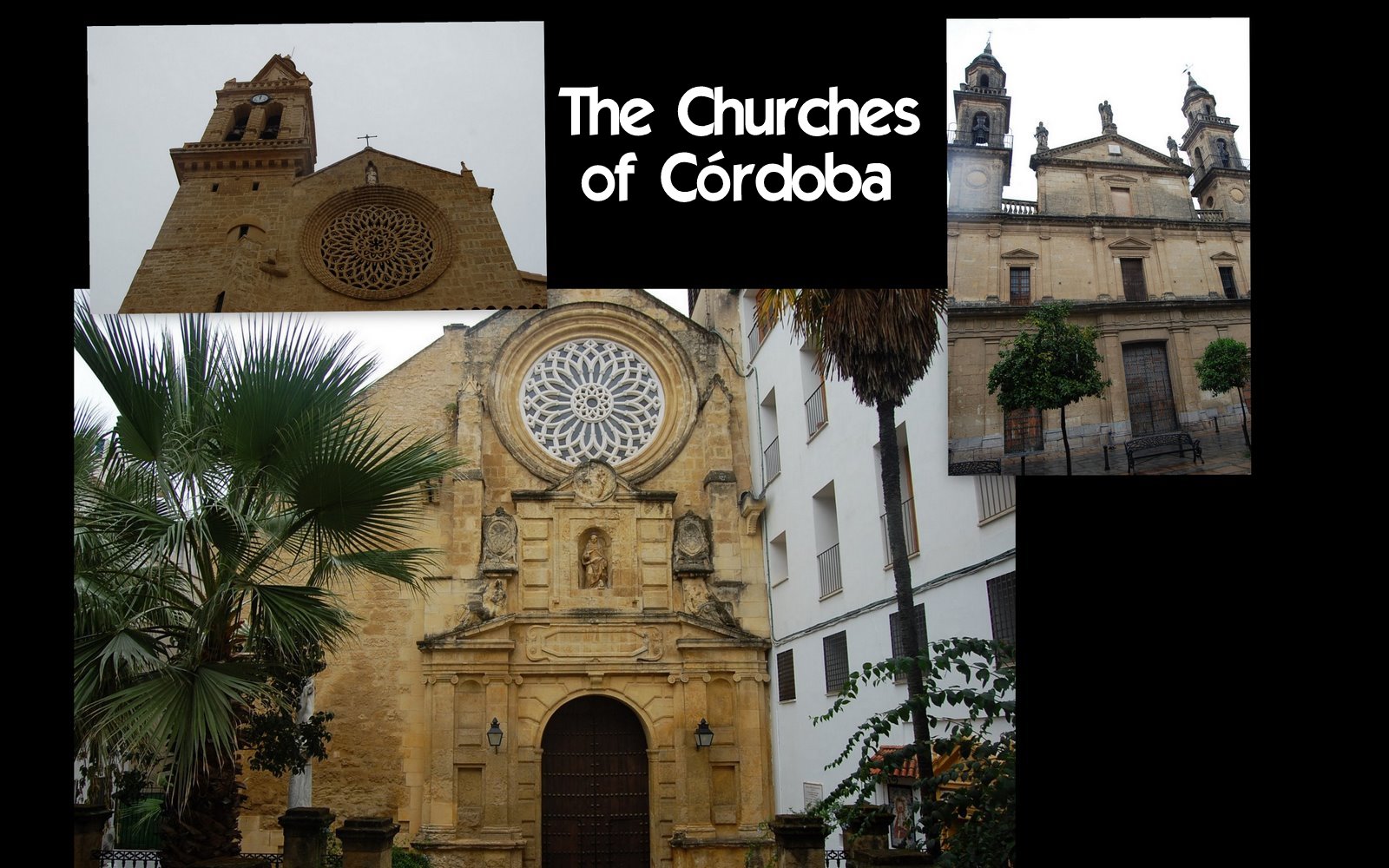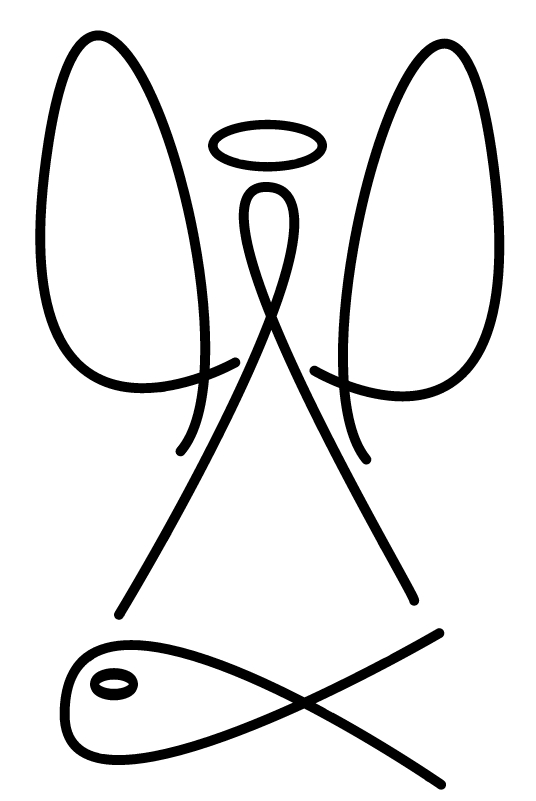
We must start, of course, with a church added long after Fernando: San Rafael.
While many consider Rafael the town’s patron saint, technically he is just the custodian. (The patrons are two 2nd century CE virgins/martyrs/sisters the Romans tortured, burnt, and threw into Rio Guadalquivir.) In 1578, as the plague raged through Europe and Córdoba, Rafael appeared to a priest named Andrew Roelas at this spot pictured above, and appointed himself the town’s guardian. After that appearance, the plague stopped here – and statues on columns (called Triumphs or “Triunfos”) started rising in the town’s market squares.
(Forgive the lens for twisting the twin steeples of San Rafael Church's in this picture.) This version of the church was built at the end of the 18th century and is the last neoclassical facade built in Córdoba.
Various scriptures name only a few archangels. Michael (Miguel) the
warrior is quite popular in Spain after their centuries of religious
wars to drive out the Muslims. Ironically, both Muslims and Christians
revere archangel Gabriel as a bringer of good news: the Annunciation to
Mary and the Qur'an to Muhammad.
 |
But what of Rafael? Rafael’s name derives from the Hebrew word for healing and he appears in Jewish, Christian, and Muslim traditions as well. His icons -- as is the case here -- often have him holding a fish whose gallbladder he used to heal Tobias’ blindness. (Do not try this at home.) Above left we have the traditional Rafael statue atop the baroque facade; at right, Wikepedia provides this minimalist contrasting view of angel and fish.
As is often the case, the
church has its courtyard (shown below) which also served the
neighborhood’s need to distribute water and gossip. Many also
served as markets.
St. Lawrence parish church was closed for repairs but the outside was still quite interesting including the 3-arch portico shown above. It was built between the 13th and 16th centuries on the site of a 10th century mosque which itself was on Rome's Via Augusta. It's one of the seven "Fernando" churches (“Fernandinos Iglesias”) built by that king immediately after the Reconquista.
Check the rose
window and its tower, both of which seem a little large for the church.
(The tower base is thought to be the original mosque's minaret.) While
the Gothic was in full swing to the north, the Christian conquerors
were primarily erecting small-windowed churches reminiscent of the
Romanesque.
The exception to the small windows are the rose windows ("rosetáns") placed near the top of the church front on walls that did not need to bear the weight of the roof. St. Lawrence's large rose window is one of the best examples of those built by Mudejar craftsmen. Its patterned abstraction freed them from the Muslim constraint of not allowing images in religious spaces. King Fernando's son was Alfonso X and early Reconquista churches were built in a combination of Gothic and Mudejar variously called "Fernandine" or "Alphonsine."
St. Lawrence's tower (above right) is interesting, not just because its cap is at a 45 degree angle from the lower tiers. It's the work again of the Ruiz family, this one by Hernán Ruiz II who learned from this tower and went onto to cap probably the most significant tower in Andalusia -- Seville's famous Giralda (shown at left). Like many church towers in Andalusia, both of these started life as minarets. This "middle" Ruiz was perhaps the most influential and prolific architect in Andalusia.
Nearby we have the square and church of San Augustine, originally part of a convent of the Augustine order.
San Augustine's entry is quite interesting with its 4 columns and clerical coat-of-arms at center, probably, given the pierced heart at its center, of the Augustinian order.
Another of the Fernando churches is San Miguel with its smaller Mudejar rose window. Inside, it went Baroque in the 18th century. Its side door (not shown here) may date from the Moorish times. Note the small window with its 6 pointed star and the Gothic ogive arched entrance. Three naves -- such as what we see here -- are typical of the Alphonsine style. Before the Moors, this site was a Visigoth basilica.
Our last church seems to be partially gobbled up by an Andalusian white wall. Near the city hall and Roman temple, these remains of the convent of San Pablo sport a small Mudjehar window above a 16th century Mannerist portal. Long before the Dominicans built, this was the site of the Roman circus (racetrack). Napoleon’s troops occupied the convent and only the church seems to have survived
The convent was set back and so at the street we have elaborate gates into the complex such as this 18th century portal with St. Paul being held aloft by spiraled columns.
|
Please join us in the following slide show to give Córdoba the viewing it deserves by clicking here. |
|
Geek and Legal StuffPlease allow JavaScript to enable word definitions. This page has been tested in Internet Explorer 8.0, Firefox 3.0, and Google Chrome 1.0. Created on June 15, 2009 |
 |